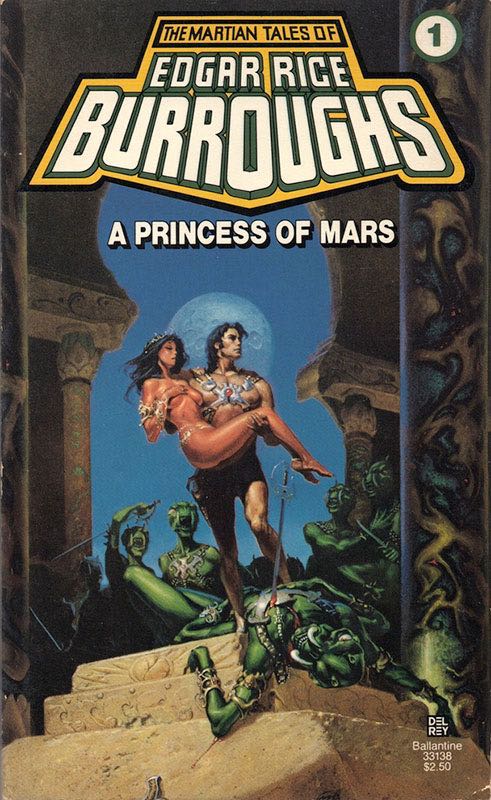A Princess of Mars
Series: Barsoom 1
Reviewed date: 2004 Nov 16
Rating: 3
145 pages
Let us bid each other farewell. The days of the greatness of Barsoom are over. Tomorrow's sun will look down upon a dead world which through all eternity must go swinging through the heavens peopled not even by memories. It is the end.
John Carter, Virginia gentleman and Civil War veteran, finds himself stranded on Mars. He fights his way through many an adventure, makes allies and gains enemies, rescues a princess, falls in love, and saves the planet Mars from complete destruction.
A Princess of Mars was serialized as Under the Moon of Mars in 1912 and marked the launch of Edgar Rice Burroughs's magnificent writing career that would grow to span well over fifty books, including the wildly popular Tarzan series. Like all of Burroughs's work, A Princess of Mars is a chauvinistic action book; but Burroughs's style and imagination carry the day. I recommend A Princess of Mars. And if you like it, there are ten more in the series.
A Princess of Mars is no longer under copyright so if you so desire, you may read it online freely and legally at Project Gutenberg.
I have a recent Del Ray edition with lurid cover art that tries to evoke that old pulp fiction feeling. They can try to fool me but I know it's a recent edition. The cover art looks old but it doesn't convince me for a minute, because they got one detail wrong: the heroine is wearing something. It looks like a belt. *squints* Made of lace.
That reminds me of when I was a kid. Someone zealous parent at the mission library took a magic marker and drew clothing onto all the cavemen on the Edgar Rice Burroughs books. I suppose it never occurred to them that we loved those books for their content; we never noticed their covers. My best friend and I would read and talk about those books for hours, and I don't ever recall staring at the covers or discussing the artwork.
This censorship did not, however, extend to National Geographic. The lesson I learned is that it's OK to look at full-color photographs of naked Africans, but it is a sin to look at crude drawings of naked cavemen.
Of course I never thought about any of this when I was a kid. I was too busy reading as many Tarzan books as I could get my hands on, and the only National Geographic articles I read were the ones about outer space or sunken ships. There was no time to ponder the significance of censored cover art; I only noticed this some years later when I looked back at all those old Edgar Rice Burroughs novels I read.
